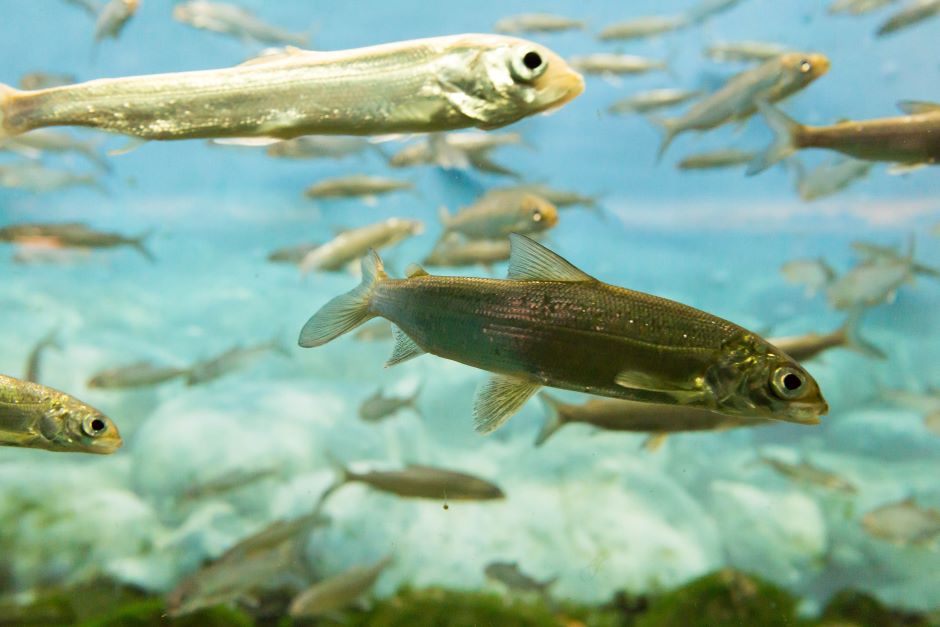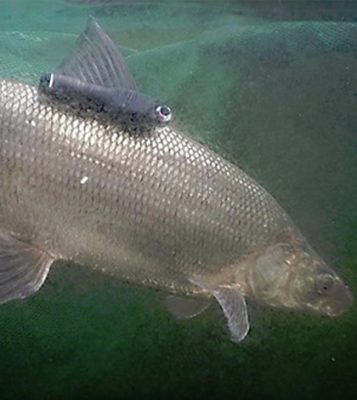Experimental Lakes Area Project Uses Fish Tags to Measure Dissolved Oxygen
 Lake whitefish (Coregonus clupeaformis) at Shedd Aquarium. (Credit: Marco Verch via Flickr NAME / CC BY 2.0)
Lake whitefish (Coregonus clupeaformis) at Shedd Aquarium. (Credit: Marco Verch via Flickr NAME / CC BY 2.0)Over the years, researchers have come up with some creative methods of measuring water quality. Some rely on environmental IoT systems, manual sampling, controlled experiments, WireWalkers that sample the water column and many other monitoring devices to gather data consistently throughout the day. But these sampling techniques have their limitations and can be quite costly for research teams on a budget. In order to combat this issue, researchers at the Experimental Lakes Area (ELA) in Canada tested a new way of tracking dissolved oxygen levels and their effects on fish, according to a research highlight from the International Institute of Sustainable Development. The new method relies on advanced fish tags that can measure parameters others can’t.
Potential Uses of Fish Tags
Traditional fish tags can be used for simply tracking purposes, but some are also able to track depth, temperature and other simple measurements. For example, anchor tags are often made of flexible monofilament, tubing and a stainless steel sphyrion anchor that displays a specimen number. These tags are generally used on fish that are migrating to gather data on how many tagged fish are reaching the end destination, returning or other movement data that researchers may be interested in.
Conversely, Passive Integrated Transponder (PIT) tags can be used to track species movement as well as gather some environmental data. PIT tags are still small and easy to attach to fish, but they have the added benefit of providing remote data to researchers. While anchor tags require catching and releasing specimen to install and document results in the future, PIT tags gather data until the fish dies or the tag is removed. The ELA, in their experiment, sought to expand the potential of PIT tags to include measuring dissolved oxygen.
Like other types of acoustic tags, the McGill University, University of Manitoba and Vemco-designed tags can measure water temperature and depth with the added benefit of being able to measure dissolved oxygen levels. Like conventional tags that are small enough to attach to fish without being too invasive or obtrusive, the new tag is small enough to fit in one hand.
“All three sensors take measurements within a span of 250 milliseconds, allowing the percent saturation of dissolved oxygen in the water to be calculated, a commonly used indicator of aquatic ecosystem health,” reads the research highlight.
Conclusion
Managers at the ELA say the tags are being used in a study in Lake 658 there. They have been attached to lake whitefish and take measurements approximately every 10 minutes. The data they collect are picked up by acoustic receivers around the lake and are being used in efforts to assess the habitat preferences of lake whitefish, an important sport fish in the United States and Canada.
As it stands, these tags could make monitoring fish and their habitats more efficient and cost-friendly. Instead of setting up a multi-parameter station or dedicating time and wages to fieldwork measuring dissolved oxygen frequently, researchers can save time by installing the tags and then letting them compile data until the tags are removed, fall off, or the fish is caught.

A new fish tag can help researchers learn more about temperature, depth and dissolved oxygen levels around the fish they’re studying. (Credit: International Institute of Sustainable Development)


Pingback: FishSens Magazine | How Wyoming is Tackling Invasive Burbot in the Green River - FishSens Magazine
Pingback: FishSens Magazine | Understanding Coaster Brook Trout Behavior in Lake Superior Informs Stocking Strategies - FishSens Magazine